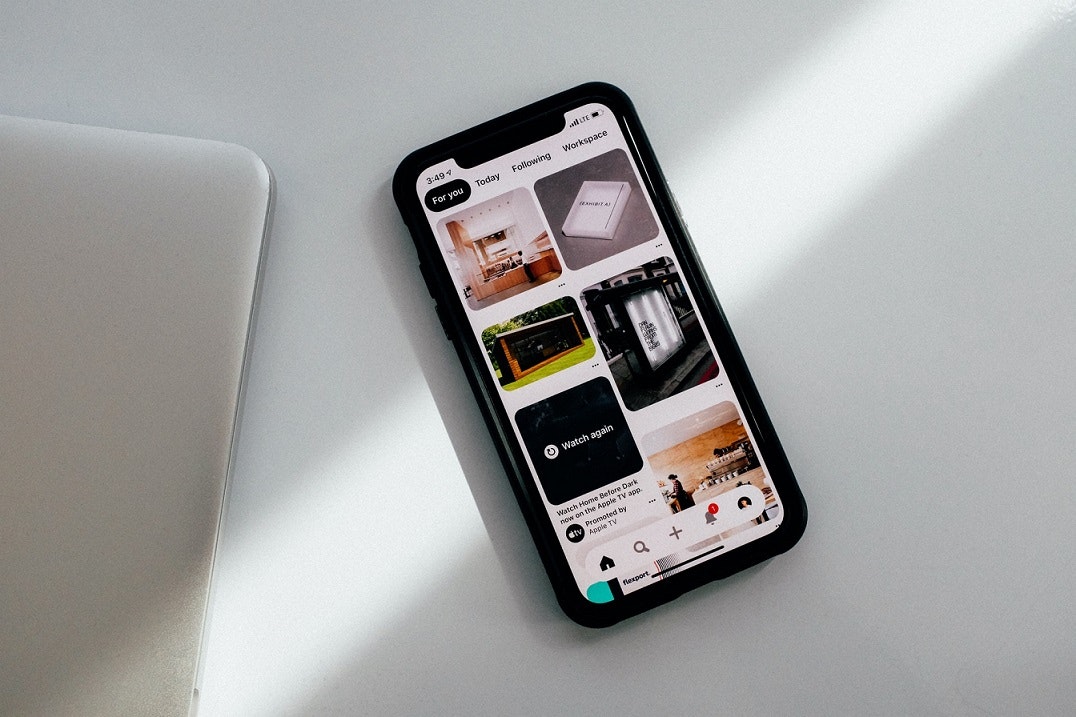One of the essential questions every entrepreneur needs to answer is how to reach customers.
The internet and digital media, in particular, have changed the way we live, make decisions, and spend money.
And as competition rises across various industries, businesses are looking for new ways to gain potential clients.
Even though there are platforms that allow us to reach millions of people organically, most businesses fail to do so because they don’t know where their ideal audience is and how to target them.
Paid ads, on the other hand, can have a good return on investment. But there’s a hidden potential of reaching millions of people organically if you know how to use today’s rising platforms.
TikTok, Pinterest, and Medium are a few of these opportunities.
These are growing at a tremendous speed and allowing creators to tap into new audiences. And the marketers who know how to use them have the chance to reach people all over the globe without spending a penny on paid advertising.




TikTok
TikTok is a Chinese video-sharing platform that was founded in 2016.
Over the past few years, it has spread like wildfire and become the most relevant competitor of Instagram.
→ Click Here to Launch Your Online Business with Shopify
During the COVID-19 lockdown, millions of new users worldwide joined the social network to watch entertaining or educational videos.
By the end of 2022, 1.8 million people were excpected to use TikTok every month and the app has been downloaded more than three billion times.
The Content
The maximum duration of a TikTok video is 60 seconds. Yet the average length of viral TikTok videos is around 15 seconds.
Even though its user interface might first look confusing, creating and sharing videos on TikTok is actually really simple.
TikTok favors in-app creations, which means you don’t need a fancy camera or video editing tools to produce excellent videos.
Instead, you can use its internal tools and create stunning videos with ease.
While most people think of TikTok as a platform to share dance videos, thousands of entrepreneurs and businesses actually use the network to share educational content.
The Audience
While more than 40 percent of TikTok’s audience is aged between 16 and 24, more and more older users are joining the platform every day.
Most of today’s popular social platforms first started by targeting younger generations, and once they got used to the network, older generations joined.
Facebook started as a platform for students, yet many of today’s grandparents scroll through their news feeds every day. And the same will likely happen with TikTok.
If you’re serving an international audience, TikTok might allow you to reach more people organically than any other platform.
And if your target audience is younger than 30 years old, now is the best time to create a marketing strategy for your TikTok channel.
Companies such as Spikeball, Vessi, or Gymshark are already using TikTok successfully and reaching millions of new potential customers every month.
However, whether you’re a consultant, coach, or trying to build your personal brand, you might be able to benefit from implementing TikTok growth tactics. Even lawyers and doctors are using the platform to develop their brands and stand out from the competition.
The Benefits and How to Get Started
Even though TikTok’s audience is growing quickly, new creators still have great opportunities to build an audience through viral videos.
While it’s almost impossible for a post to go viral on Instagram without having lots of followers, it’s still likely on TikTok.
Right now, the app favors new creators and fresh content, so if you join the platform soon and share relevant content, you might get tens of thousands of views with ease.
And by placing a link to your website or email list in your profile description, you can turn your TikTok audience into subscribers and paying customers.

Pinterest was founded in 2009 in the US and is a visual search engine.
Even though many people know about Pinterest and have probably even used it as a source of inspiration, only few people understand how to use it as an effective marketing channel.
→ Click Here to Launch Your Online Business with Shopify
Yet, thousands of today’s blogs and online businesses rely on Pinterest as their primary traffic source.
The Content
On Pinterest, you create vertical images, known as Pins, to promote an article, a video, or a product.
When people click on that Pin, they end up on your website to read a blog post, watch a video, sign up for a newsletter, or make a purchase.
Pinterest works for businesses that sell physical products as well as those selling digital services and products.
Creating visually appealing Pins and writing engaging copy is what matters most in order to make people click on your Pin and go to your website.
The Audience
More than 360 million people use Pinterest every month. Yet what stands out is that over 70 percent of the users are women with strong purchasing power.
According to studies, 47 percent of Pinterest users browse through the platform to make a buying decision. These purchases are mostly tied to significant life events such as a wedding, a child’s birth, or a relocation.
However, online businesses that don’t sell physical products can benefit from the massive traffic on Pinterest too.
Personal Growth Base, for instance, is a website dedicated to helping people to become their best selves. On its Pinterest page, the brand shares Pins with blog posts’ titles to get people to read its content.
Once you click on one of the Pins and read an article, you have the opportunity to subscribe to a weekly personal development newsletter. And if you like the content, you can join an online course to dive even deeper.
The Benefits and How to Get Started
The main benefit of Pinterest compared to other platforms is that you can easily automate the marketing process.
Once you’ve created the Pins, you can schedule them with marketing tools such as Tailwind.
Pinterest is particularly relevant for two types of businesses:
A) Businesses with a catalog of existing content such as blog posts or YouTube videos. These companies can create a lot of content for Pinterest easily just by designing Pins for their existing content.
B) Businesses that sell products that are particularly appealing to women. Even though more and more men are joining the platform, it’s still dominated by females.
That’s why Pinterest is particularly promising for companies that target middle-aged women.

Medium
Medium is an American online publishing platform that allows anyone to create and share written content.
The platform was founded in 2012 by Evan Williams, the co-founder of Twitter. Today, Medium is one of the 300 most visited websites and anyone can sign up and share articles in a few clicks.
The Content
Medium is dedicated to writing and consists of blog posts and stories of various forms.
While it might be hard for a fashion brand to grow a significant audience on Medium, it’s an excellent place for businesses that rely on content marketing through educational articles.
If you, for instance, launch a mindfulness app, Medium can be the perfect place to share articles about self-care, mindfulness, or meditation. Those who read your posts will likely be potential customers for your product or service.
Just like on Pinterest, Medium is also a great place to grow an email list for a knowledge-based company.
And if you’re selling online courses or a digital coaching package, you might find an interested audience on Medium that you can turn into subscribers and customers through a simple call to action at the end of your articles.
The Audience
What distinguishes Medium from other platforms is that more than 90 percent of its users are college graduates. While TikTok is all about attention-grabbing content, Medium readers want more in-depth knowledge.
Even though Medium is a platform with a worldwide community, most of its users are located in America and Asia. However, its European audience is growing at a particularly quick rate.
The Benefits and How to Get Started
With more than 100 million monthly readers, Medium is a massive opportunity for those who share high-quality written content.
Certain niches such as self-improvement, tech, or entrepreneurship are particularly popular. So if your business operates in one of these areas, you have the opportunity to reach your ideal customer by publishing relevant content.
In addition to its massive reach, Medium also has a high domain authority. With a score higher than 90, the website outranks most other pages. This makes it relatively easy for marketers to create content that can be found through Google searches.
That’s why it might be better to start your company blog on Medium instead of using your own website. But even if you publish your company’s articles on Medium, you can also republish them on your website and vice versa.

Final Thoughts
TikTok, Pinterest, and Medium are three effective ways to drive traffic to your website or online store in 2023 and beyond.
Even though these platforms aren’t new, most businesses don’t know how to use them effectively to reach their target audience. That’s why you can have a significant advantage by giving it a try and tapping into these platforms’ enormous audiences.
While all three platforms can be a source of free, organic traffic, your success and reach on each of them depend on your consistency.
On TikTok, you should aim to upload at least one to three videos per day. On Pinterest, you’ll need to schedule a minimum of ten Pins per day. And on Medium, your goal should be to publish high-quality articles at least once per week.
The more content you publish, the higher your chances of success on these platforms. And even though you don’t need to pay for the reach, you’ll need to invest lots of time to drive free traffic through these platforms.
Last but not least, marketing your business on these platforms will only work if you genuinely care about your audience and create content that is worth watching or reading.
With millions of videos and blog posts online, people can quickly distinguish between brands who care about their audience and those that don’t.



